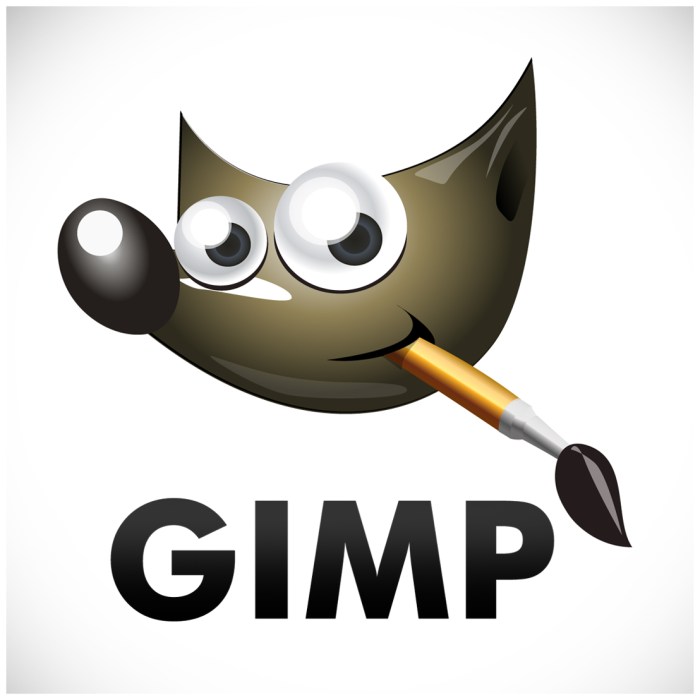Exploring the World of Gimp: A Comprehensive Guide
Embark on a journey into the realm of Gimp, a versatile graphic design tool that has revolutionized the industry. This introduction sets the stage for an in-depth exploration of Gimp's features and functionalities, offering readers a glimpse into the endless possibilities it provides for creative expression.
As we delve deeper into the world of Gimp, we uncover its rich history, innovative tools, and practical tips for enhancing your graphic design projects.
Introduction to Gimp
Gimp, short for GNU Image Manipulation Program, is a free and open-source raster graphics editor used for tasks such as photo retouching, image composition, and image authoring. It is a powerful tool in the field of graphic design, offering a wide range of features and capabilities.
History of Gimp
Gimp was originally created in 1995 by Spencer Kimball and Peter Mattis as a project at the University of California, Berkeley. Over the years, it has evolved into a robust software with a dedicated community of developers and users who continue to improve and expand its functionality.
Key Features of Gimp
- Layer-based editing: Gimp allows users to work with multiple layers, making it easier to manipulate and organize elements within an image.
- Customizable brushes and tools: Users can create and customize brushes and tools to suit their specific needs and artistic style.
- Extensive plugin support: Gimp supports a wide range of plugins that can be used to enhance its functionality and add new features.
- File format support: Gimp is compatible with various file formats, including popular formats like JPEG, PNG, and GIF.
- Advanced color management: Gimp provides tools for advanced color correction and manipulation, allowing users to achieve their desired color effects.
Tools and Interface
When working in Gimp, users have access to a wide range of tools that cater to various editing needs. These tools are designed to assist users in manipulating images effectively.
Tools Overview
- Selection Tools: Allow users to select specific areas of an image for editing.
- Paint Tools: Include brushes, pencils, and airbrushes for drawing and painting on images.
- Transform Tools: Enable users to resize, rotate, and distort selected areas of an image.
- Color Tools: Offer options for adjusting colors, gradients, and levels in an image.
- Retouching Tools: Provide tools for removing blemishes, smoothening skin, and enhancing details.
- Text Tools: Allow users to add text to images with various fonts, sizes, and styles.
User Interface
The interface of Gimp is designed to enhance workflow by providing a customizable layout that caters to individual preferences. Users can arrange toolbars, panels, and windows according to their workflow, making it easier to access frequently used tools and features.
Customization Options
- Toolbox: Users can customize the toolbox by adding or removing tools based on their editing needs.
- Dockable Dialogs: Dialogs such as Layers, Paths, and Brushes can be docked, undocked, or grouped together for easy access.
- Themes: Gimp offers various themes that allow users to change the appearance of the interface to suit their visual preferences.
- Keyboard Shortcuts: Users can assign custom keyboard shortcuts to tools and functions for quick access during editing.
Working with Layers
Layers are a fundamental feature in Gimp that allow you to work on different parts of an image separately, making editing and design tasks more flexible and efficient.
Benefits of Using Layers
- Easy to make non-destructive edits: By working on separate layers, you can make changes without affecting the original image.
- Enhanced creativity: Layers enable you to experiment with different effects, textures, and adjustments without committing to a final design.
- Improved workflow: Organizing elements on different layers helps you manage complex projects more effectively.
Tips for Managing Layers in Gimp
- Use descriptive names: Rename layers to reflect their content or purpose for easier identification.
- Organize layers into groups: Grouping related layers together can streamline your workflow and keep your workspace tidy.
- Utilize layer masks: Layer masks allow you to selectively show or hide parts of a layer without deleting any pixels.
- Adjust layer opacity: Changing the opacity of a layer can help you blend elements seamlessly and create subtle effects.
Image Editing and Manipulation
Image editing is a crucial aspect of working with graphics, and Gimp offers a wide range of tools and features to manipulate images effectively.
Basic Image Editing Tools
- Cropping: To remove unwanted areas from an image, select the Crop Tool and adjust the selection to the desired area. Press Enter to apply the crop.
- Resizing: Go to Image > Scale Image to adjust the dimensions of the image. Make sure to maintain aspect ratio to avoid distortion.
- Retouching: Use the Healing Tool or Clone Tool to remove imperfections, blemishes, or unwanted elements from the image.
Advanced Image Manipulation Techniques
- Layers and Masks: Utilize layers to work on different elements of an image separately. Masks allow for selective editing without affecting the original image.
- Filters and Effects: Experiment with a variety of filters and effects to enhance or transform the appearance of the image. Play around with settings to achieve desired results.
- Color Correction: Adjust brightness, contrast, saturation, and color levels to improve the overall look of the image.
Step-by-Step Guide: Removing Background from an Image
- Open the image in Gimp and select the Foreground Select Tool.
- Artikel the foreground object and refine the selection as needed.
- Click on the "Select" button to create a selection mask around the foreground object.
- Invert the selection by going to Select > Invert, then press Delete to remove the background.
- Fine-tune the edges and make any necessary adjustments to achieve a clean cutout.
Filters and Effects
Filters and effects are essential tools in Gimp that allow users to enhance the visual appeal of their images through various manipulations and adjustments. These tools can help transform ordinary photos into stunning works of art by adding textures, changing colors, or applying artistic effects.
Popular Filters and Effects
- Blur: This filter can create a soft and dreamy effect by blurring parts of an image.
- Sharpen: Enhances the details and crispness of an image, making it appear more defined.
- Color Balance: Adjusts the colors in an image to create a more harmonious and balanced look.
- Distort: Allows users to warp or distort images for creative effects like swirls or ripples.
- Artistic: Offers a range of artistic filters such as oil painting, cartoon effect, and watercolor to give images a unique style.
Enhancing Visual Appeal
Filters and effects play a crucial role in enhancing the visual appeal of images by adding depth, texture, and mood to photos. They can help create a specific atmosphere or evoke emotions in viewers by manipulating colors, contrasts, and details.
By using filters and effects creatively, users can transform ordinary photos into captivating artworks that stand out.
Creative Use of Filters and Effects
- Applying a vintage filter to give photos a nostalgic and timeless look.
- Using the gradient tool along with color balance filters to create a dramatic sunset effect.
- Combining multiple filters like blur and sharpen to create a dynamic depth of field effect.
- Experimenting with layer masks and blending modes to achieve unique and surreal compositions.
Drawing and Painting

Digital artwork in Gimp offers a wide range of drawing and painting tools that allow users to create stunning illustrations with ease. Whether you're a beginner or an experienced artist, exploring these tools can enhance your creative process and bring your ideas to life.
Exploring Drawing and Painting Tools
- Brushes: Gimp provides a variety of brushes that can mimic traditional painting techniques like watercolor, oil, and acrylic. Experimenting with different brush settings can help you achieve the desired effects in your digital artwork.
- Pencil and Pen Tools: These tools are perfect for creating precise lines and Artikels in your illustrations. Adjusting the opacity and size of the pencil or pen can add depth and dimension to your artwork.
- Eraser Tool: Just like a traditional eraser, the eraser tool in Gimp allows you to correct mistakes and refine details in your digital drawings. You can customize the eraser's shape and size for more accurate editing.
Tips for Creating Digital Illustrations
- Use Layers: Organize your artwork by working on different elements in separate layers. This allows you to make changes without affecting the rest of the composition.
- Experiment with Blending Modes: Gimp offers a variety of blending modes that can alter the way colors interact with each other. Try different blending modes to create unique effects and textures in your illustrations.
- Utilize Filters and Effects: Enhance your digital artwork by applying filters and effects to add depth, texture, and lighting effects. Experiment with different filters to achieve the desired look.
Differences Between Traditional and Digital Art
- Undo and Redo: One major advantage of digital art in Gimp is the ability to undo or redo any changes made to your artwork. This flexibility allows for more experimentation and creative freedom.
- Non-Destructive Editing: Unlike traditional art mediums, digital artwork in Gimp allows for non-destructive editing, meaning you can make changes without altering the original image.
- Unlimited Possibilities: With digital art tools in Gimp, you have access to a wide range of brushes, colors, and effects that may not be possible in traditional art. This opens up endless creative possibilities for artists.
Outcome Summary

In conclusion, Gimp stands as a powerful ally for designers seeking to push the boundaries of creativity. From image editing to digital painting, Gimp offers a robust set of features that empower users to bring their artistic visions to life.
Dive into the world of Gimp and unleash your creative potential today.
FAQ
What are layers in Gimp?
Layers in Gimp are like transparent sheets stacked on top of each other, allowing users to work on different elements of an image separately and then combine them seamlessly.
How can I customize the interface in Gimp?
In Gimp, you can customize the interface by rearranging panels, creating custom tool presets, and adjusting color schemes to tailor the workspace to your preferences.
What advanced image manipulation techniques can I use in Gimp?
Gimp offers advanced image manipulation techniques such as perspective cloning, content-aware resizing, and seamless cloning that enable users to achieve intricate edits with precision.
How do filters and effects enhance images in Gimp?
Filters and effects in Gimp can add texture, depth, and visual interest to images, transforming them from simple compositions to captivating works of art.
What are the key differences between traditional drawing/painting and digital art in Gimp?
In Gimp, traditional drawing/painting involves physical mediums like pencils and brushes, while digital art utilizes digital tools to create artwork directly on a computer, offering a wide range of creative possibilities.




